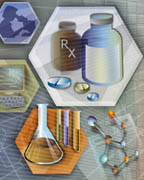Copper has traditionally been used in the electronics industry because of its excellent characteristics as a conductor of electricity. However, the “red metal” has also begun to shine in the healthcare field because of its antibacterial quality and its ability to limit the spread of pathogenic microorganisms. This year, the Innovation Program for the Mining Cluster of Chile gave its annual innovation award to a project utilizing copper as an antibacterial agent at the Hospital of Calama in Chile’s Second Region. This trend is opening up new market opportunities for Chile, which is among the world’s largest producers of copper, but experts warn that new uses for the metal will have certain barriers to overcome.

Sign up to stay informed about our latest article releases.